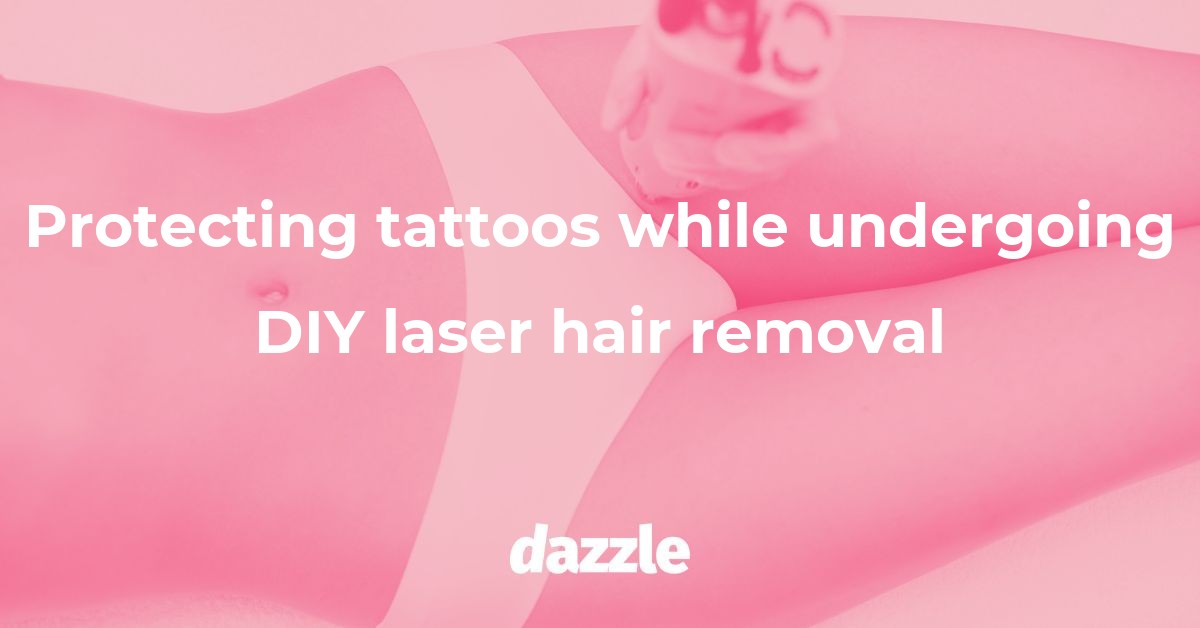Protecting tattoos when undergoing DIY laser hair removal is crucial because laser beams are attracted to the pigmentation in both hair and tattoo ink. If the laser comes into contact with a tattoo, it can cause issues like scarring, discoloration or fading of the tattoo’s design, and even burns. To avoid these issues, it’s vital to follow proper steps to protect your tattoos during your at-home laser treatment.
How to cover a tattoo for laser hair removal?
If you have a small tattoo you can cover it with a bandaid before laser hair removal. If your tattoo is large then it’s safe to laser around the tattoo if there’s enough space between the laser and the tattoo.
Below are all the available options for shielding your tattoos:
- Medical tape or bandages: Wrap your tattoo with medical tape or bandages in a way that securely covers the entire tattoo.
- White scar patch: Apply a white scar patch to the tattoo, ensuring the patch fully covers the design.
- DIY barrier: Create a barrier by applying a thick layer of a non-toxic white substance, like zinc oxide cream, to your tattoo.
- Specially designed tattoo protection shields: Purchase a laser protection shield specifically made for protecting tattoos during laser hair removal sessions. Learn more about this at covering tattoos during at-home laser hair removal.
What precautions should you take when performing DIY laser hair removal near tattoos?
When performing DIY laser hair removal near tattoos, you should take several precautionary steps to ensure the safety of your artwork and skin. More information can be found at laser hair removal around tattoos safe practice tips:
- Avoid directing the laser directly at the tattoo and its immediate surrounding area.
- Adjust the hair removal device’s settings to accommodate different skin pigmentation and hair colors, if possible.
- Ensure the area around the tattoo is smooth and clean, free from any potential irritants.
- Perform a small patch test on your skin, away from the tattoo, to ensure you do not have any adverse responses to the process.
- Consult with a professional if you are uncertain about proper treatment near tattoos.
How is DIY laser hair removal different from professional treatments when it comes to tattoos?
While both DIY and professional treatments for laser hair removal use similar technology, a significant distinction arises in regards to tattoos. Professional laser technicians have the necessary experience, knowledge, and equipment to carefully navigate around tattoos and adapt their treatment method accordingly. DIY laser hair removal devices may not possess the same level of customization or precision to avoid unwanted side effects on tattoos, making it more critical to exercise caution and follow proper protection methods when undertaking at-home laser hair treatments.

